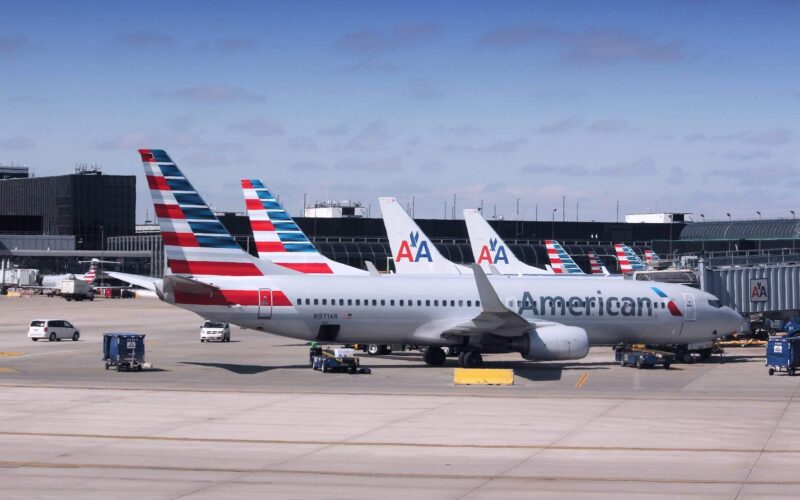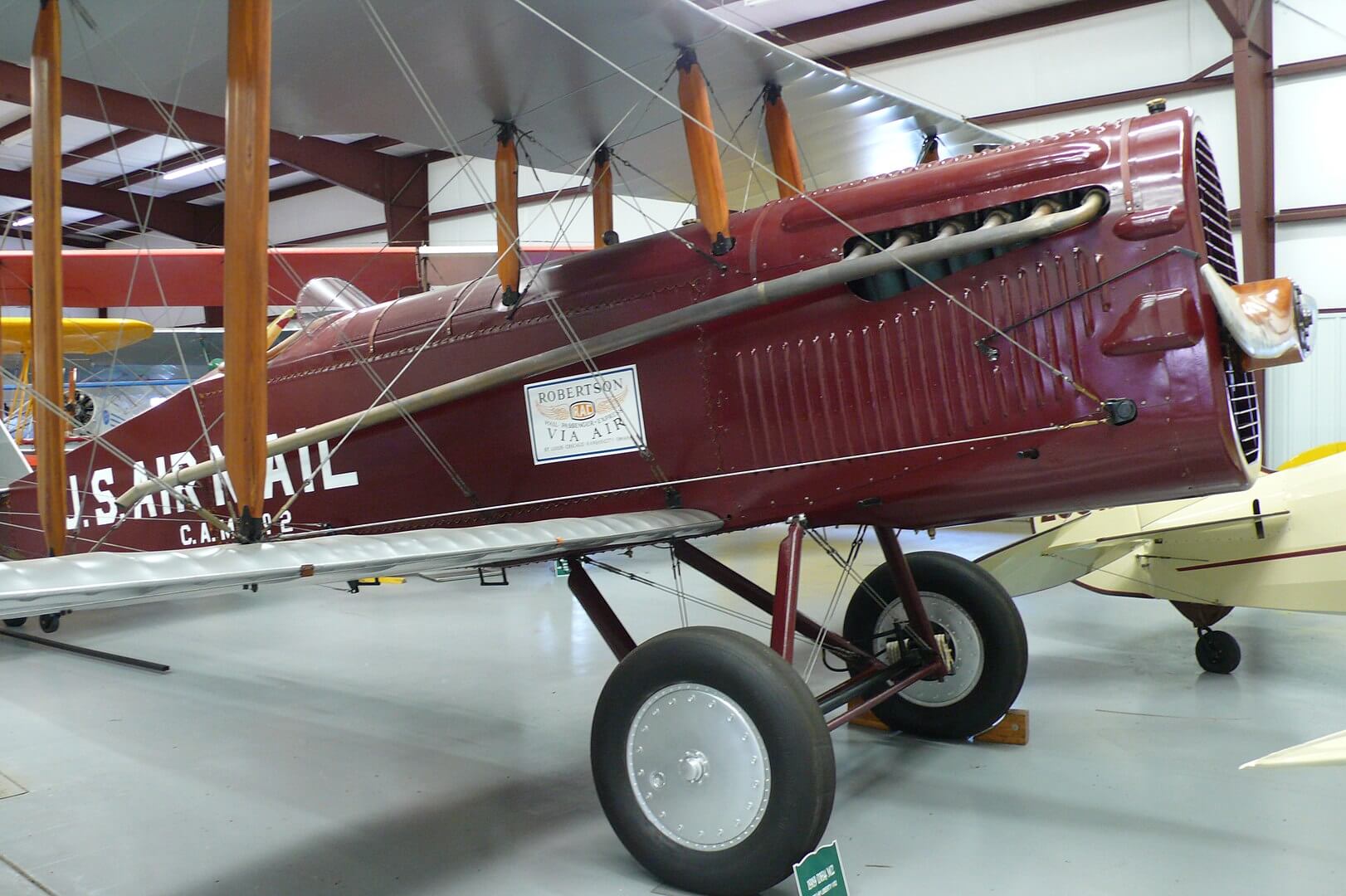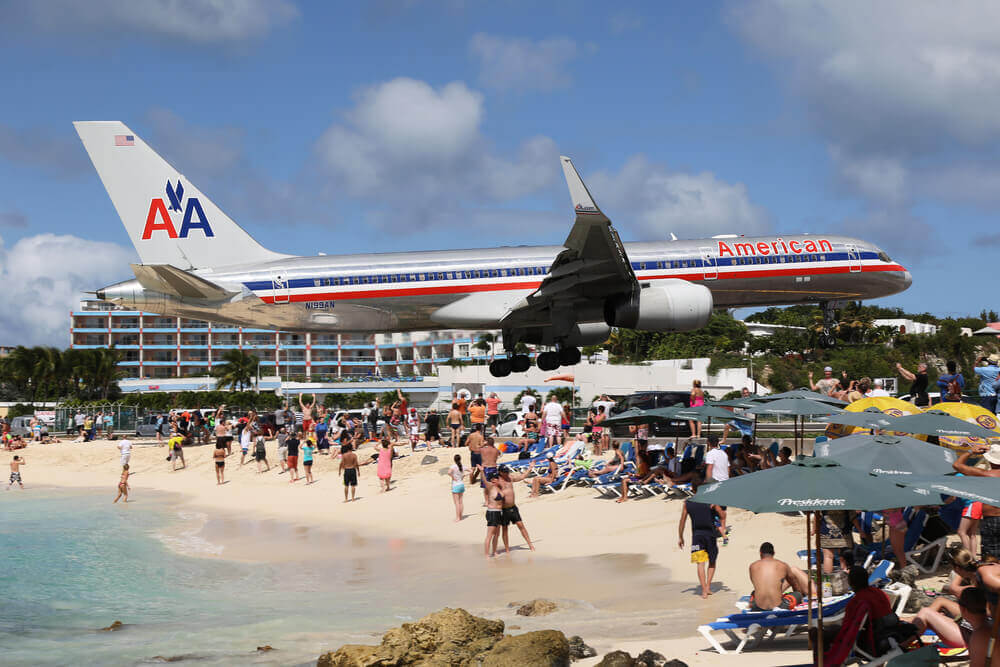On April 15, 1926, Charles Lindbergh departed St. Louis, Missouri flying a Robertson DH-4 aircraft, carrying U.S. mail destined for Chicago, Illinois on what is considered the first flight of American Airlines (A1G) (AAL).
Robertson DH-4 aircraft. Image by Tim Vickers, Public Domain
In 1930, following a series of mergers and acquisitions of 82 small airlines, the air mail carrier was branded American Air Ways. By 1934, after eight years of shuttling air mail, the company was acquired by Errett L. Cord who hired Cyrus R. Smith as CEO and soon the name was changed to American Airlines (A1G) (AAL).
At the time, airlines were not able to successfully operate a profitable route solely carrying passengers, so C. R Smith began working closely with Donald Douglas to develop the DC-3, which would be capable of carrying up to 28 passengers.
Initially not keen to develop a new aircraft, Douglas was persuaded by Smith who expressed his intent to purchase 20 aircraft, and on June 26, 1936, American Airlines (A1G) (AAL) flew the first DC-3 from New York to Chicago.
Owing to the DC-3, American Airlines (A1G) (AAL) was able to switch revenue from mail to passenger services. Referring to the DC-3 as the “Flagship”, AA founded the Admiral Club for distinguished passengers and by the end of the decade, American Airlines (A1G) (AAL) began trading on the New York Stock Exchange (NYSE).
In 1953, AA became the launch customer of the DC-7, having requested that Donald Douglas build an airliner capable of flying the U.S. coast-to-coast, non-stop within eight hours. American, which purchased 25 of the aircraft, pioneered non-stop transcontinental services across the U.S.
Entering the jet-age, American Airlines (A1G) (AAL) had ordered the British-built de Havilland Comet, but soon cancelled the order following reports of metal fatigue.
The quad-jet Boeing 707 was introduced into the fleet in January 1959 and dominated the airline industry through the 1960s and early 1970s, symbolizing the dawn of the jet era. In 1959, for the first time ever, more people travelled transatlantic by air than by sea.
American Airlines (A1G) (AAL) led the way for the airline industry through the second half of the 20th century. Notably, American was the first airline in the world to open a dedicated flight attendant training college at Dallas-Fort Worth in 1957.
On December 3, 1964, the airline had recruited the first commercial African American pilot and was the first major U.S. airline to employ a female pilot on March 30, 1973, when Bonnie Tiburzi was hired to fly the Boeing 727 fleet. In 1986, the airline made history operating the first U.S. flight to be crewed by an all-female team.
The 1986 flight crew was comprised of 7 women. #AllFemaleCrew pic.twitter.com/IXJrlXpdBu
— Come From Away (@wecomefromaway) December 30, 2018
Once again, American Airlines (A1G) (AAL) would play a pivotal role in the launching of a new aircraft when in 1966, the airline laid out specifications to manufacturers for a wide-bodied aircraft, smaller than the Boeing 747, but with similar long-range capability. The McDonnell Douglas DC-10 tri-jet was developed and entered service on August 5, 1971, with American Airlines (A1G) (AAL).
In 1979, AA moved to Dallas-Fort Worth, changing to a hub and spoke style operation. Robert Crandall, the new CEO, expanded American Airlines’ (A1G) (AAL) presence at key hubs in Chicago and Dallas adding services to European destinations as well as Japan.
During the 1980s, American launched AAdvantage®, the first airline loyalty program, and in 1984, founded American Eagle. American Eagle, is a regional subsidiary of American Airlines (A1G) (AAL) and operates short to medium-haul flights, feeding traffic into the main hubs of Dallas, Charlotte, Chicago, and Los Angeles among others.
American Airlines (A1G) (AAL) celebrated the milestone of carrying its one-billionth customer on March 27, 1991, and in 1999 partnered with British Airways, Cathay Pacific, Canadian Airlines and Qantas to found the Oneworld airline alliance, which today serves 1,012 airports in 170 countries worldwide.
The 2000s brought financial hardship to the airline industry following the events of the September 11, 2001 attacks in which, tragically, American Airlines (A1G) (AAL) was directly involved. On that fateful morning in 2001, with the downing of Flights 11 and 77, American Airlines (A1G) (AAL) lost 23 people, while the nation mourned the loss of 2,977 loved ones.
The airline would not return to profit until 2005, however, the revived success was short lived when the global financial crisis hit in 2008, placing further strain on the airline.
Through the 2010s, AA expanded on a huge scale, launching joint ventures with Japan Airlines, British Airways, Iberia, and JetBlue Airways. In July 2011, American signed the largest aircraft order in history, agreeing to purchase 460 Boeing 737 and Airbus A320 aircraft.
However, on November 29, 2011, American Airlines’ (A1G) (AAL) parent company AMR Corporation filed for bankruptcy protection and soon began discussions for a possible merger. It was on February 14, 2013, that US Airways and AMR Corporation announced they would merge to form the American Airlines Group, creating the largest airline in the world.
The merger carried forward the AA name and branding, including the new livery, which launched on January 17, 2013. The final US Airways flight departed on October 16, 2015 under the callsign ‘1939’, symbolic of its first flight, and the following day American and US Airways commenced operation as a single airline.
Today, American Airlines (A1G) (AAL) (AA) is the largest airline in the world by both fleet size, with around 900 aircraft, and by scheduled passengers, with around 200m flown pre-pandemic. With main hubs in Dallas-Fort Worth, LAX, JFK and Charlotte the airline operates nearly 6,800 flights per day to an impressive 350 destinations and employs 123,000 personnel.
American, like all airlines suffered hugely during the COVID-19 pandemic, mounting a loss of $8.9 billion in 2020. The airline retired more than 100 ageing aircraft, including E190, A330, 757, 767 and CRJ200 fleets. Owing to those retirements, AA now operates the youngest fleet of the U.S. legacy carriers.



